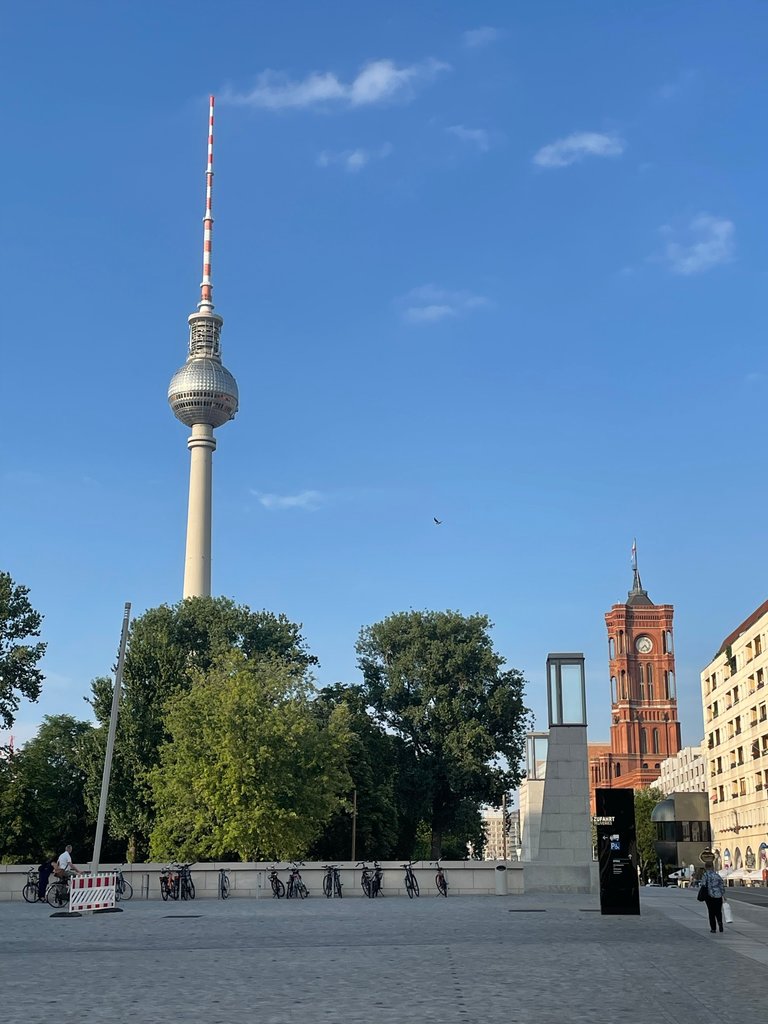Bridges of Berlin – The Weidendammer Bridge

In the heart of Berlin, where Friedrichstraße crosses the Spree, stands one of the city's most charming and historically rich crossings: the Weidendammer Bridge. It’s easy to pass over it without noticing — especially on a grey Berlin day — but this bridge has witnessed more than a century of transformation, upheaval, and rebirth.
A Bridge with a Long Story
The first bridge at this location was built in 1685, made of wood and surrounded by the willow trees that gave it its name (“Weidende”—willows). Already back then, this spot was an essential link between the rapidly growing districts north and south of the river.
The current iron bridge was completed in 1896, during the late Wilhelminian era, when Berlin’s population and ambitions were booming. Iron construction was the modern pride of the Empire — artistic, durable, forward-looking.
Architecture: Iron Elegance
The Weidendammer Bridge is one of the oldest surviving iron bridges in Berlin. Its decorative elements are unmistakably from the turn of the century: cast-iron railings, ornate lamp posts crowned with gilded suns, and a graceful arch structure that blends engineering with art. It’s a rare example of industrial architecture that still feels warm and almost romantic.

Even today, standing on the bridge gives you a wonderful view of the Spree, the tourist boats gliding underneath, and Berlin’s changing skyline surrounding it.
A Quiet but Important Role
Though not as famous as Oberbaumbrücke or as spectacular as the Moltke Bridge, the Weidendammer Bridge plays an important part in Berlin’s daily flow. It connects Friedrichstraße, one of the city’s key north–south arteries, carrying commuters, cyclists, tourists, and seemingly endless streams of taxis.
Historically, it also gained attention in 1919 during political unrest, and later became part of the divided city’s inner tension points — though unlike other crossings, it always remained in West Berlin.
Today it is simply there, doing what Berlin infrastructure does best: quietly weaving together the city’s many layers.
Brücken von Berlin – Die Weidendammer Brücke

Mitten in Berlin, dort wo die Friedrichstraße die Spree überquert, steht eine der charmantesten und geschichtsträchtigsten Brücken der Stadt: die Weidendammer Brücke. An einem grauen Berliner Tag läuft man schnell darüber hinweg – und doch hat diese Brücke über ein Jahrhundert voller Wandel, Modernisierung und Umbrüche erlebt.
Eine Brücke mit langer Geschichte
Die erste Brücke an dieser Stelle entstand 1685. Sie war aus Holz und lag inmitten der Weidenbäume, die ihr ihren Namen gaben. Schon damals war dieser Übergang wichtig, um den Norden und Süden des wachsenden Berlins zu verbinden.
Die heutige Eisenbrücke wurde 1896 fertiggestellt, in einer Zeit, in der Berlin vor Kraft, Industrie und Selbstbewusstsein pulsierte. Eisen war das Symbol der Moderne – technisch, langlebig und zugleich künstlerisch ausgestaltet.
Architektur: Eleganz aus Eisen
Die Weidendammer Brücke ist eine der ältesten erhaltenen Eisenbrücken Berlins. Ihre typischen Jugendstil- und Wilhelminischen Elemente sind sofort erkennbar: kunstvoll verzierte Geländer, verzierte Laternen mit vergoldeter Sonne und eine elegante Bogenkonstruktion, die Ingenieurskunst und Ästhetik verbindet.

Von der Brücke aus hat man auch heute noch einen malerischen Blick auf die Spree, die vorbeiziehenden Ausflugsboote und die moderne Berliner Architektur ringsum.
Eine still wichtige Verbindung
Auch wenn sie nicht so berühmt ist wie die Oberbaumbrücke oder so monumental wie die Moltkebrücke, erfüllt die Weidendammer Brücke eine entscheidende Funktion: Sie verbindet die Friedrichstraße, eine der wichtigsten Nord-Süd-Achsen Berlins.
Täglich strömen Radfahrer, Pendler, Touristen und Taxikolonnen über sie hinweg. In der Geschichte spielte sie während der politischen Unruhen 1919 eine Rolle und blieb später – im geteilten Berlin – im Westteil der Stadt.
Heute ist sie einfach Teil des städtischen Gefüges: unspektakulär, aber unverzichtbar, und ein schönes Beispiel für Berlins architektonisches Erbe.
Ciao Kakao, Eure Morticia
 |  |  |
| Get 100 Ecency Points for a reshare! | Ciao Kakao | Get 100 Ecency Points for a reshare! |
[//]:# ([//]:# (!worldmappin 52.52195 lat 13.38795 long d3scr))
You can check out this post and your own profile on the map. Be part of the Worldmappin Community and join our Discord Channel to get in touch with other travelers, ask questions or just be updated on our latest features.